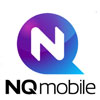
Report Identifies Top Three Malware Threats for 2012
A new report from NQ Mobile Inc., indicates that from 2010 to 2011, Android officially overtook Symbian as the most targeted mobile platform in the world by cyber criminals.
NQ Mobile's Mobile Security Report also shows that in 2011, newer and more advanced forms of malware have successfully infected an estimated 10.8 million Android devices worldwide. This is expected to increase throughout 2012.
"Smartphones and tablets are finally delivering consumers with these converged and connected experiences we've been promised for so long," says Omar Khan, Co-CEO NQ Mobile. "But this is a double edged sword: as smart device usage becomes more sophisticated, so too are cyber criminals' methods of attacking consumers' personal information."
Key Findings for 2011
- Malware threats to Android devices increased 1880 percent from January to December 2011
- More than 10.8 million Android devices worldwide were infected by malware
- The top countries with infected Android devices were China, India, the United States of America, Russia and the United Kingdom
Trends in Malware Design
In 2011, malware created significant technical challenges for the industry. Specifically, mobile malware authors were not only actively applying advanced malware infection techniques from the traditional (and relatively mature) PC arena, but also developing new exploits or attacks unique the mobile platforms.
The top three techniques used by malware authors to gain access to mobile device were:
- Piggybacking on Legitimate Apps: Malware developers download popular applications, insert malicious code and then place the application back onto a marketplace. When users download and install this application it immediately launches its payload into the users smart device.
- Upgrade Apps to Malicious Apps: Similar to piggybacking, malware developers insert a special upgrade component into a legitimate application allowing application to be updated to a new, malicious version.
- Enticing Users for Downloads: The ability to side load applications outside of official application marketplaces allows malware developers an easy way to entice users to download malicious apps.
Predictions for 2012 and Beyond
As more consumers use their mobile devices to shop and bank, malware developers will be enticed by easy access to personal data. Despite best efforts by the market to actively develop and deploy advanced defense mechanisms, several types of mobile malware will continue to evolve in 2012.
- We will see more piggybacking on legitimate banking and financial apps as well as malware dressed up as security protection applications.
- We will see more SMS fraud scams that charge users high rates for messaging and collect users' personal data.
- Popular on PCs, we will see more mobile botnets which will take advantage of security gaps and allow hackers to send messages, make phone calls and access user contacts and other personal information.